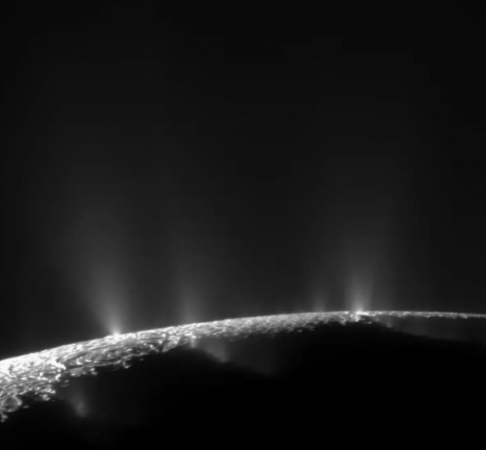
USA: Researchers have mapped a massive water vapour plume coming from Saturn's moon Enceladus using NASA's James Webb Space Telescope. It was discovered that the south pole's jet stream, which extends over 9,656 kilometres, is more than 20 times the size of the moon. The possibility of life existing outside of Earth is once again brought up by this most recent Webb discovery. This is why.
The 1.5 million km away Webb telescope is equipped to see in longer wavelengths of light, which increases its sensitivity. While earlier telescopes have recorded water plumes coming from Enceladus, Webb is giving astronomers new information. Webb will act as the satellite's "primary observation tool" in the upcoming years.
In the search for extraterrestrial life, Enceladus is regarded as "one of the most exciting scientific targets" in the solar system. Interestingly, a salty ocean where life may possibly exist exists between the moon's icy outer crust and its rocky core. This tiny moon, which is about 4% the size of Earth and is about 500 km across, is also quite small.
Also Read: Why Big MNC are closing their factories and production facilities from China's mainland
According to a recent study based on computer modelling, Enceladus' ocean may contain as much phosphorus as or even more than Earth's seas, indicating that the alien world may be habitable. The moon's ocean is known to contain other essential elements that are necessary for supporting life, such as carbon, hydrogen, oxygen, nitrogen, and sulphur. Phosphorus is one of these essential elements.
Returning to the recently discovered water vapour plume on Enceladus, scientists speculate that it might contain the elements necessary for life. Additionally, it is larger than any previous moonwater vapour emissions. Additionally, researchers can observe "how this emission feeds the water supply for the entire system of Saturn and its rings."
Also Read: UAE left the Combined Maritime Forces two months ago
Scientists have been astonished by more than just the plume's length. About 299 litres of vapour per second were being jetted out of the moon at a particularly rapid rate.For comparison, it would take more than two weeks on Earth to fill an Olympic-sized swimming pool with water at this rate using a garden hose.
According to NASA's Goddard Space Flight Center's Geronimo Villanueva, Enceladus' orbit around Saturn takes only 33 hours. The moon and its jets are essentially spitting off water as it whips around Saturn, leaving a halo that resembles a donut in its wake. In the Webb observations, the plume was enormous and there was water all over the place.
Also Read: Diplomatic source: Sudanese army puts a halt to cease-fire negotiations
There is a halo that Enceladus leaves behind between the outermost and widest rings of Saturn. This halo is known as a "torus." Webb's observations demonstrate for the first time how Enceladus' water plumes sustain the entire Saturn system and its rings. Researchers found that 70% of the water spreads out, supplying water to the rest of the Saturnian system, while 30% of the water remains within this torus region.